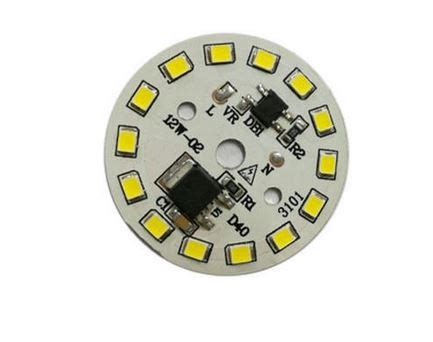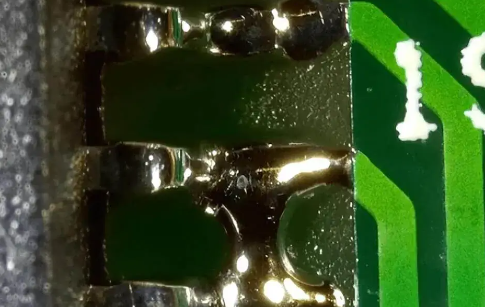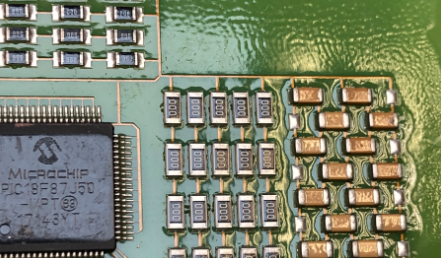The importance and advantages of aluminum pcb in LED application
Introduction
With the LED technology fast-paced,led lighting products popularizing rate getting higher and higher in normal life and industrial application.LED(light-emitting diode)has gradually replaced traditional incandescent and fluorescent lamps due to its high efficiency energy saving and long life.However ,LED high efficiency not only depend on its lighting character,but also related to its heat dissipation.Aluminium pcb as a prominent heat dissipation material,plays a vital role in LED application.This article will deeply discuss the importance、structural characteristics、manufacturing technology and its advantages in LED applications.
1. Basic Concepts of Aluminum PCB
Aluminum PCB is a metal-based copper clad board (Metal Core PCB, MCPCB), whose core material is aluminum. Unlike traditional FR-4 PCB (glass fiber reinforced epoxy resin copper clad board), aluminum PCB has excellent heat dissipation performance. The structure of aluminum PCB usually includes three layers:
- Circuit layer (copper layer): used for wiring and soldering electronic components, usually made of electrolytic copper foil.
- Insulating layer (dielectric layer): Located between the circuit layer and the aluminum substrate, it plays the role of electrical insulation and heat conduction.
- Substrate layer (aluminum layer): As the core part of heat dissipation, the aluminum substrate can quickly conduct heat away to ensure the stable operation of the LED.
2. The importance of aluminum substrate in LED applications
1. Heat dissipation performance
LEDs will generate a lot of heat when working. If this heat cannot be dissipated in time, it will cause the temperature of the LED chip to rise, thereby affecting its luminous efficiency and service life. Due to its high thermal conductivity, the aluminum substrate can effectively conduct the heat generated by the LED to the radiator or the external environment, thereby maintaining a stable operating temperature of the LED.
2. Improve LED life
The life of the LED is closely related to its operating temperature. Excessive temperature will accelerate the aging of the LED chip and cause the light decay to increase. The aluminum substrate can significantly reduce the operating temperature of the LED through efficient heat dissipation, thereby extending the service life of the LED.
3. Improve light efficiency
The light efficiency (i.e., luminous efficiency) of the LED decreases with the increase of temperature. Aluminum substrates can keep LEDs working at lower temperatures through effective heat dissipation, thereby improving their light efficiency and ensuring stable brightness of LEDs.
4. Structural stability
Aluminum substrates have high mechanical strength and can provide a stable support structure for LEDs. Especially in high-power LED applications, aluminum substrates can withstand large thermal and mechanical stresses to ensure long-term stable operation of LED modules.

III. Structural characteristics of aluminum substrates
1. Circuit layer
The circuit layer is the top layer of the aluminum substrate and is usually made of electrolytic copper foil. The thickness of the copper foil can be adjusted according to specific application requirements. Common thicknesses include 1oz (35μm), 2oz (70μm), etc. The main function of the circuit layer is to wire and solder electronic components. Its design needs to consider factors such as current carrying capacity and signal transmission.
2. Insulation layer
The insulation layer is located between the circuit layer and the aluminum substrate and is usually made of insulating materials with high thermal conductivity, such as epoxy resin, polyimide, etc. The main function of the insulating layer is electrical insulation. It also needs to have good thermal conductivity to ensure that heat can be effectively transferred from the circuit layer to the aluminum substrate.
3. Substrate layer
The substrate layer is the core part of the aluminum substrate and is usually made of aluminum or aluminum alloy. The thickness of the aluminum substrate can be adjusted according to the specific application requirements. Common thicknesses are 1.0mm, 1.5mm, 2.0mm, etc. The main function of the aluminum substrate is heat dissipation. Its high thermal conductivity can quickly transfer heat to the radiator or the external environment.
4. Manufacturing process of aluminum substrate
1. Material selection
The manufacturing of aluminum substrates first requires the selection of suitable materials. The circuit layer usually selects electrolytic copper foil, the insulating layer selects insulating materials with high thermal conductivity, and the substrate layer selects high-purity aluminum or aluminum alloy.
2. Surface treatment
During the manufacturing process, the surface of the aluminum substrate needs to be treated to improve its thermal conductivity and welding performance. Common surface treatment methods include anodizing, chemical nickel plating, etc.
3. Circuit pattern production
The production of circuit patterns usually adopts photolithography process. First, photoresist is coated on the copper foil, and then the circuit pattern is formed through exposure, development and other steps. Finally, the excess copper foil is removed by etching to form the required circuit.
4. Insulation layer lamination
The lamination of the insulation layer is one of the key steps in the manufacture of aluminum substrates. The insulation layer needs to be tightly combined with the circuit layer and the aluminum substrate to ensure good thermal conductivity and electrical insulation. The lamination process is usually carried out under high temperature and high pressure to ensure the close combination between the layers.
5. Cutting and forming
Finally, the aluminum substrate needs to be cut and formed according to the specific application requirements. Common cutting methods include mechanical cutting, laser cutting, etc. The aluminum substrate after forming needs to be surface cleaned and quality inspected to ensure that it meets the design requirements.

5. Advantages of aluminum substrates in LED applications
1. Efficient heat dissipation
The biggest advantage of aluminum substrates is their efficient heat dissipation performance. LEDs generate a lot of heat when working. If this heat cannot be dissipated in time, the temperature of the LED chip will rise, which will affect its luminous efficiency and service life. The aluminum substrate can effectively transfer the heat generated by the LED to the heat sink or the external environment through its high thermal conductivity, thereby maintaining the stable operating temperature of the LED.
2. Improve the life of LEDs
The life of LEDs is closely related to their operating temperature. Excessive temperature will accelerate the aging of LED chips and lead to increased light decay. The aluminum substrate can significantly reduce the operating temperature of LEDs through efficient heat dissipation, thereby extending the service life of LEDs.
3. Improve light efficiency
The light efficiency (i.e., luminous efficiency) of LEDs decreases with increasing temperature. The aluminum substrate can keep the LED working at a lower temperature through effective heat dissipation, thereby improving its light efficiency and ensuring the stability of the LED brightness.
4. Structural stability
The aluminum substrate has high mechanical strength and can provide a stable support structure for the LED. Especially in high-power LED applications, the aluminum substrate can withstand large thermal and mechanical stresses to ensure the long-term stable operation of the LED module.
5. Lightweight design
Compared with traditional heat dissipation materials, aluminum substrates have a lighter weight and can provide lightweight design for LED products. Especially in the fields of portable LED devices and automotive lighting, the lightweight design of aluminum substrates can significantly reduce the overall weight of the product.
6. Environmental protection
Aluminum substrates have good recyclability and meet environmental protection requirements. After the life cycle of LED products ends, aluminum substrates can be recycled and reused to reduce the impact on the environment.
6. Specific cases of aluminum substrates in LED applications
1. LED lighting
In the field of LED lighting, aluminum substrates are widely used in various lighting products, such as LED bulbs, LED tubes, LED panel lights, etc. Aluminum substrates can ensure that LED lighting products maintain stable brightness and life under long-term operation through efficient heat dissipation.
2. Automotive lighting
In the field of automotive lighting, aluminum substrates are widely used in headlights, taillights, turn signals, etc. Automotive lighting has high requirements for heat dissipation performance. Aluminum substrates can ensure that automotive lighting works stably in various harsh environments through their efficient heat dissipation performance.
3. Display screens
In the field of LED display screens, aluminum substrates are widely used in outdoor advertising screens, indoor display screens, etc. LED display screens usually need to work for a long time. Aluminum substrates can ensure that the display screen maintains stable brightness and color under long-term operation through their efficient heat dissipation performance.
4. Industrial lighting
In the field of industrial lighting, aluminum substrates are widely used in high-power LED lamps, such as mining lamps, tunnel lamps, etc. Industrial lighting usually needs to work in high temperature and high humidity environments. Aluminum substrates can ensure that lamps work stably in various harsh environments through their efficient heat dissipation performance.

VII. Future development trends
With the continuous development of LED technology, the importance of aluminum substrates in LED applications will be further enhanced. In the future, the development trends of aluminum substrates mainly include the following aspects:
1. Application of high thermal conductivity materials
In the future, aluminum substrates will use materials with higher thermal conductivity to improve their heat dissipation performance. For example, using high thermal conductivity ceramic materials as insulating layers can further improve the thermal conductivity of aluminum substrates.
2. Thin design
With the trend of thinning and lightening of LED products, aluminum substrates will also develop in the direction of thinning. Thin aluminum substrates can not only meet the thinning and lightening requirements of LED products, but also improve their heat dissipation performance.
3. High-precision manufacturing process
In the future, the manufacturing process of aluminum substrates will be further improved to meet the needs of high-precision LED products. For example, the use of laser drilling technology can achieve drilling with smaller apertures and improve the flexibility of circuit design.
4. Application of environmentally friendly materials
In the future, aluminum substrates will use more environmentally friendly materials to reduce the impact on the environment. For example, the use of degradable insulating materials can reduce the impact of aluminum substrates on the environment after they are discarded.
Conclusion
Aluminum substrates play an important role in LED applications. Their advantages such as efficient heat dissipation performance, structural stability, and lightweight design make them an indispensable part of LED products. With the continuous development of LED technology, the application scope of aluminum substrates will be further expanded, and their manufacturing processes and materials will continue to improve to meet the needs of future LED products. The development of aluminum substrates will provide strong support for the advancement of LED technology and promote the widespread application of LED lighting products in various fields.





